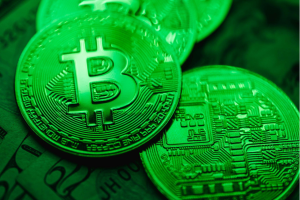The Australian leverage zeitgeist – Guest Editorial
Australian risk consultant and founder of professional trading software company ManagedLeverage Richard Goers gives a gritty account of how he sees ASIC’s draconian proposals and the polarised reaction of brokerages

By Richard Goers, Founder & Managing Director, ManagedLeverage and risk consultant with over 25 years expertise
As a long-termer in the Australian FX business, it would be interesting to review how the Europeans fought the EMSA on their product intervention proposals.
Ever since the recent proposals were placed into the hands of the public and the Australian CFD providers by the Australian Securities and Investments Commission (ASIC), there has been a massive rallying of the troops here as important decisions are beginning to be made by brokerages.
The strategies and the outcome, as in the Antipodes, when you would have thought by now that most people have had the time to rethink these strategies for this event, but then, maybe it is not so smart to assume that many people would know what was likely to be proposed by ASIC.
We knew that there may well be an attempt to follow the ESMA rulings, but that is limited just to leverage, I’m not sure that anyone had guessed or could have anticipated that they would consider restricting leverage whilst at the same time making an emulation of the rulings in the United States by preventing retail margin brokers from attracting international clients.

Some of the larger companies are going ALL OUT on a campaign to get both retail traders and the ‘industry’ to respond to ASIC’s toxic product intervention with feedback to the regulator on why ‘leverage’ is good, which in regulator-speak equates in the minds of the bureaucrats to ‘greed is good’ and therefore perhaps they would like to get Michael Douglas to reword that scene in Wall Street.
Some individuals with a vested interest in ensuring that the right outcome for the industry is reached and sustainability can be reasonably assured are using LinkedIn popups with talking heads, industry forums, industry submissions. I am not sure about FaceBook as I dont go there but that is also a retail FX outlet via its pages and forums.
I think the current strategy is one dimensional in that leverage is good, retail needs leverage, and an overreaching perspective that if leverage is reduced the industry will collapse and create unemployment, think of all the tax being paid. This can be conveyed to the government via media presenting pretty faces who make money trading FX.
Then you have SaxoBank down here calling out this practice and fully supporting low leverage as well as headlining in the media, therefore it seems that the division is to accept the fate, or fight it, and many firms may plump for option B if not already in place, as wall paperers, get the great unwashed out to the islands, they need the fresh air to trade as they wish.
CMC Markets and IG Group seem agnostic, if that is the right word,relaxed as to their fate or smart enough to play the long tail game.
Leverage restrictions in conjunction with restricted access to offshore clients is the killer to the business, and some of the good quality retail brokers in Australia are highlighting this fact.
The dog whistle here is that the industry feels that it has a right to exist, that if the retail customer wants and needs to get the daily dose of leverage it is their money, they are not breaking any rules, therefore let them have it.
Bearing this in mind, my suggestion is that ASIC is thinking CFDs are like cigarettes: They need to be restricted as a health hazard and industry self regulation is not working, take them off the shelf, debrand them.
There is a whole lot of research into how some of the industry players (some of course of which do not exist today, yet have done damage!) knew the risks but hid them, using similar arguments that today’s thoughts show, and used marketing and lobby groups to maintain the status quo.
As per my analogy, people can still get cigarettes, but consumption has fallen. God forbid that is a bad thing and the tobacco industry is still very profitable.
I would have thought and still think it is an option that will be presented, that there be a third category. Not retail and just wholesale [who are retail with more money] but an experienced trader between these definitions who opts for leverage, the European option.
However, at its core, some of the B-book firms are showing that their business can only exist on client losses – that their business model exists because clients lose and therefore move into offshore clients in order to survive.
It highlights that anyone who seeks to rescind their ASIC license and head offshore are not legit financial institutions to offer investment products but bucket shops of the early 20th Century when Livermore was around.
To be frank, the industry does not have a lot to play with and seems to run on the idea that ASIC still plays to the old rules that they only intervene when there is a breach, when the patient is hit by a car, they are the ambulance which usually arrives too late.
20:1 leverage requires $5,000 to trade $100,000. You get a margin call at 50%, which is $2,500 which needs to be ponied up to trade again.
Therefore, the outcome is that traders who put down $100 which is leveraged to $1,000 are gone or now can only trade minis.
As per the Japanese example, trading becomes more disciplined, safer for the trader, an option as a side hussle to make money in a zero interest rate environment coming to the rest of the world. It seems the landscape is suitable for low leverage derivatives to become a viable option to trade at 20 – 30 to 1 leverage which is where the professionals trade.
So what will we see perhaps is more marketing on mini lots, and in terms of new product, a lot of noise to make traders increase turnover, perhaps some commentary from talking heads called market information, beefed up economic calendars, maybe Twitter feeds, all to get as much information to the trader to get them to trade more.
The old adage that old school traders had which was to turn off CNBC [at least the Taleb style traders] as there was no intelligence there but entertainment, now this applies for retail traders in the case of their smart phone.
As lower leverage increases the duration of the trade, the velocity of earnings slows down, and so less there is realised loss, and more unrealised exposure for the broker which is a dangerous space as the client can actually make money which the B bookers think is the pure definition of a toxic trader.
Thus, there could be some new products on the horizon to increase turnover to balance out the equation that leverage impacts, get the trader to trade more but, as many people in the industry well know, will not stop clients making losses on their trades.
Now for something completely different. Perhaps we should look at MetaTrader as a legacy system. After all, MT4 sounds almost the same as saying Model T Ford.
The subject matter and the content of this article are solely the views of the author. FinanceFeeds does not bear any legal responsibility for the content of this article and they do not reflect the viewpoint of FinanceFeeds or its editorial staff.









